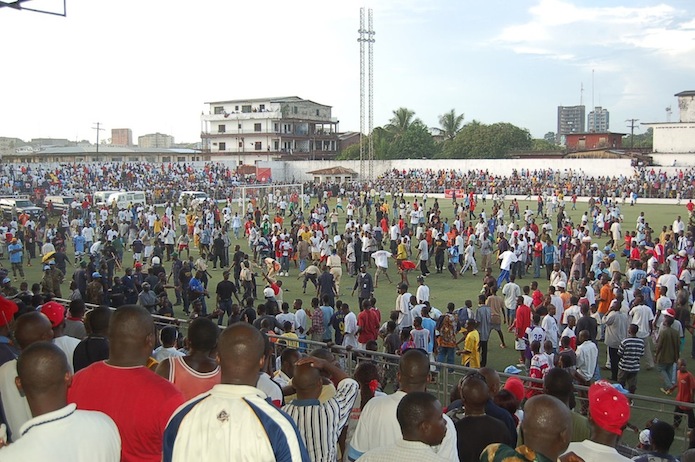
Football is Coming Home is pleased to welcome Pelle Kvalsund for a new series on the field of sport development. How can we develop regular long-term sport opportunities for a youth population that is predicted to double in the next thirty years? How do we ensure that the services produced for these athletes are of quality and value so that we can retain both athletes and coaches? This first post outlines some of the main institutional and economic challenges.
By Pelle Kvalsund
Pelle Kvalsund, international sport development consultant, is a former athlete, coach, and physical education teacher from Norway. As a consultant for over 15 years, he has worked in many countries including Vietnam, Sri Lanka, Burundi, Zambia, and Bosnia. Pelle has served a number of international organizations, both within sport and the area of community development, and is currently an advisor for the Norwegian Olympic and Paralympic Committee and Confederation of Sport and their partners in the global south. He is the author of “Sport as a Response to Emergencies and Disasters” in Sport, Peace and Development, edited by Keith Gilbert and Will Bennett (free download here).
I’m at the National Stadium in Monrovia, Liberia, in 2007, watching a women’s international football match between the host nation and Nigeria. The stadium is jam-packed with fans and UN peacekeepers. It ends 1-1. A fair result from my perspective as a neutral observer, but not for the home fans. A riot breaks out. The crowd storms the pitch and the UN peacekeepers fire teargas to save the unfortunate referee from the mob.
There is a lot to be said about this rowdy incident, but above all else it illustrates the extraordinary popularity of football and the social importance of sport, particularly in sub-Saharan Africa and other parts of the world where resources are scarce and life is generally challenging and unstable.
And it is precisely sport’s cultural significance that provides those of us working in sport development with a foundation on which to build sport programs that offer positive activities and outlets for many children and youth.
Let me start by doing something that I hate doing, but have become quite good at: identifying a stereotype. I do this to present a general image of the field of sport development in the Global South (though it applies to parts of global north too).
Such a country boasts a Ministry of Sport, which is paired with the Ministry of Youth or the Ministry of Education. The department of sport is of very high personal and political interest within government circles due to the widespread popularity of sports in society (particularly football), but the same interest is not reflected in the budget allocations. Most of the sport budget is used to pay the government employees (directly and by extension) and to maintain their status. Some of the money pays for upkeep of facilities and the participation of national teams in international competitions. Most of the remaining funds find their way to the national football association, while only a symbolic sum goes to athletics, basketball, volleyball, and other sports with athletes capable of winning a medal for the country on the global stage.
Administratively, the country has a national sport council or commission (the extension mentioned above) mandated to roll out government policies, distribute government funds, provide logistical support for major competitions, and govern and support the associations. A national Olympic committee bring selected athletes to the Olympic Games every four years. In addition, it has the financial ability to support elite athlete development and organizational capacity building through a central program called Olympic Solidarity.
Each sport also has a national association that generally consists of an “elected” board and president, and a general secretary. The president makes the important decisions and the general secretary does the work. There is no office. The association’s documentary records are tucked away in a briefcase or (if lucky) in the general secretary’s laptop. The associations run their operations according to a calendar of events.
There is no long-term plan, just day-to-day survival. Money is impossibly scarce and there is neither sufficient equipment nor adequate facilities. Instead of a youth development plan, potential athletes are recruited from a few well-endowed schools that host inter-scholastic sport competitions once or twice a year. In the case of football, private academies and sport and development NGOs of varying size and quality also train young boys. (Girls are rarely included in these programs.)
This stereotype of how sport is organized and run in a country of the Global South should help to better understand the stark challenges before us and how they shape the multiple and diverse attempts and approaches used to develop sport in poorer regions of the world. In the blog posts that follow, I intend to share reflections based on my experiences in Africa and beyond to spark a dialogue with readers about the differences between “Sport Development” and “Sport For Development” and why these matter. I look forward to the conversation.
One reply on “Sport Development or Sport For Development?”
I like your video on the Sondela website!
http://www.sondela.info/Sondela/Front.html
https://www.youtube.com/watch?v=DrdNA0uImcc